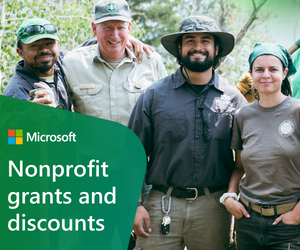Trends in Fundraising: What Happened in 2023 and What to Look For in 2024

When the pandemic upended our lives as we knew them, there was much uncertainty as to what would happen when things ‘got back to normal’ – ‘back to normal’ being a relative term as we continue to remain humbled by events out of our control. But post-pandemic trends did begin to emerge in 2023 and will continue to be of relevance to fundraisers in 2024.
We asked experienced fundraisers in Canada which trends they saw in 2023 and what they predict for 2024. Vincent Duckworth, CFRE, chair of AFP Foundation for Philanthropy – Canada and president and CEO, ViTreo Group Inc., provided his thoughts. Taslim Somani, MBA, former director of digital strategy at Stephen Thomas Limited, current principal of GivingStar and board member at Myseum of Toronto, looked at things from a digital perspective. And Daniel H. Lanteigne, ASC, C.Dir., CFRE, CHRP, vice president of talent, strategy, and impact at BNP Performance Philanthropic and vice chair of membership for the Association of Fundraising Professionals (AFP Global), provided his insight. This list was developed based on their wide-ranging analysis of things that happened in 2023 and what they think we should keep our eyes on in 2024.

- Trust remains paramount: “The relationship between donors and organizations sometimes resembles that of a long-time couple,” says Lanteigne. “There is undoubtedly great respect, yet at times, a certain lack of communication. Communication needs to be authentic, even vulnerable, so that trust can either be maintained or, in some cases, built. While philanthropy is increasingly sophisticated, it still hinges on a central aspect: trust.”
- The total number of donors is down. “How many people are giving, who is giving, how they are giving, and where they are giving is changing,” says Duckworth. “Reports now regularly point to the fact that the total number of donors is down and that these numbers are decreasing year-over-year. This decline began pre-COVID and has continued through 2023. Total giving remains stable with slight increases year-over-year…but from fewer donors.”
- The increasing importance of video content to reach donor audiences. “I have seen Myseum of Toronto, where I am a board member, and other nonprofits, post highly engaging, educational and entertaining videos on TikTok and Instagram Reels,” says Somani. “And I foresee the increasing importance in fundraising of video over text moving forward. People don't have the patience to read anymore. Young people use TikTok as their primary search engine. They want to see it and they want to act.”
- Millennials and Gen Z are now a critical demographic in giving regularly online. “To a large degree,” says Duckworth, “these generations have gotten their long-asked-for wish—to give primarily online.” The Blackbaud institute reports that online giving in charitable organizations of all sizes had grown 42% over three years and, notably, there’s been a 28% increase in people giving from their mobile device.
- The causes which people are supporting are changing. “In the short-term, we are seeing significant shifts in giving to support international aid,” adds Duckworth, “such as the conflicts in Ukraine and in Gaza. Early overall shifts in giving to long under-supported areas like climate action and to Black and Indigenous philanthropy are also, finally, getting some traction in attracting more and larger gifts.” In 2021, Walmart Foundation committed $20 million over five years to advance equity for Black and Indigenous Canadians. It reported on its progress last June. In 2022, the Ivey Foundation, a long-time fixture in Canadian philanthropy, decided to wind up its operations and donate the entire $100 million of its endowment fund by the end of 2027 to help combat the climate crisis. Last September, TD Bank Group pledged $5 million over five years to the Future Generations Foundation's Beyond Reconciliation Campaign.
- There is increasing sophistication in nonprofit fundraising technology. “Instead of all-in-one solutions, tech stacks that integrate donations and CRM software with stand-alone marketing automation, analytics, content creation tools, and others, are increasingly prevalent and more sophisticated than I’ve ever seen in the sector,” says Somani. “And we can only expect the level of skill and expertise to grow.” The Nonprofit Hub, a training and resource centre, wrote about why nonprofits should integrate fundraising and marketing. “By integrating marketing and fundraising, you can ensure proper communication frequency with supporters. You can provide consistent messaging across channels. This is key to cultivating long-term donors and supporters,” they say.
- Hiring fundraisers remains hard. “It was challenging to hire fundraisers before COVID and it remains hard,” says Duckworth. “The world has changed—some fundraisers have left the sector; some want to work remotely; and many have very different expectations than they did prior to COVID. We are regularly fielding calls from nonprofits who have been trying to hire fundraisers for the better part of a year—30% of our business now centers around placing interim fundraisers with organizations until they are able to hire full-time staff. Pre-COVID, this type of work represented less than 5% of our business.”
- Donor metrics dashboards become critical for growth. “A way in which to quickly assess donor analytics is mission-critical for growth,” says Somani. “Getting the right data to the right managers so they can understand their donor trends, digital reach and level of engagement will play a vital role in decision-making. Tools like Google Looker Studio which aggregates data from disparate sources, also give executives access to KPIs for planning, reporting and accountability. Accessible dashboards are now a must-have.”
- Dreaming and daring to think big. “If you are like me, the recent articles you've come across about charities foretell an imminent service break or the potential demise of a program due to lack of funding,” says Lanteigne. “Dreaming and daring to think big is like asking to extinguish a fire while simultaneously making plans for reconstruction. It can seem unrealistic and even disrespectful to some. However, we must try to create a space to stop focusing solely on the fires to be extinguished—our society drastically needs ambitious and inspiring projects for current and future generations. Philanthropy should be agile enough to respond to urgent needs while also dreaming of a better future.”
- Impact of AI and the ethics of AI in nonprofit communications. “In many ways, it’s the issue of our time and because we are dealing with a variety of audiences—from vulnerable communities to major donors, we’ve got to get it right,” says Somani. “The sector is still figuring out how to ethically incorporate artificial intelligence into its operations,” says Lanteigne. “But time is running out for organizations that have not brought this issue to their boards,” he says. “The year 2023 will be forever marked as the year artificial intelligence entered the mainstream as more than a parlour trick the future,” adds Duckworth. “By this time next year and maybe even sooner, there will be ChatGPT models specifically tailored to house the entire information content of some of Canada’s largest charities, and depending on where you sit, this is either a doomsday scenario or a change we will look back upon as important as the advent of the personal computer.”
Although predicting the future is always a tricky proposition looking at past trends helps us to plan for what might happen. Either way, fundraisers have a unique perspective on the world and how that world might be changed for the better.





